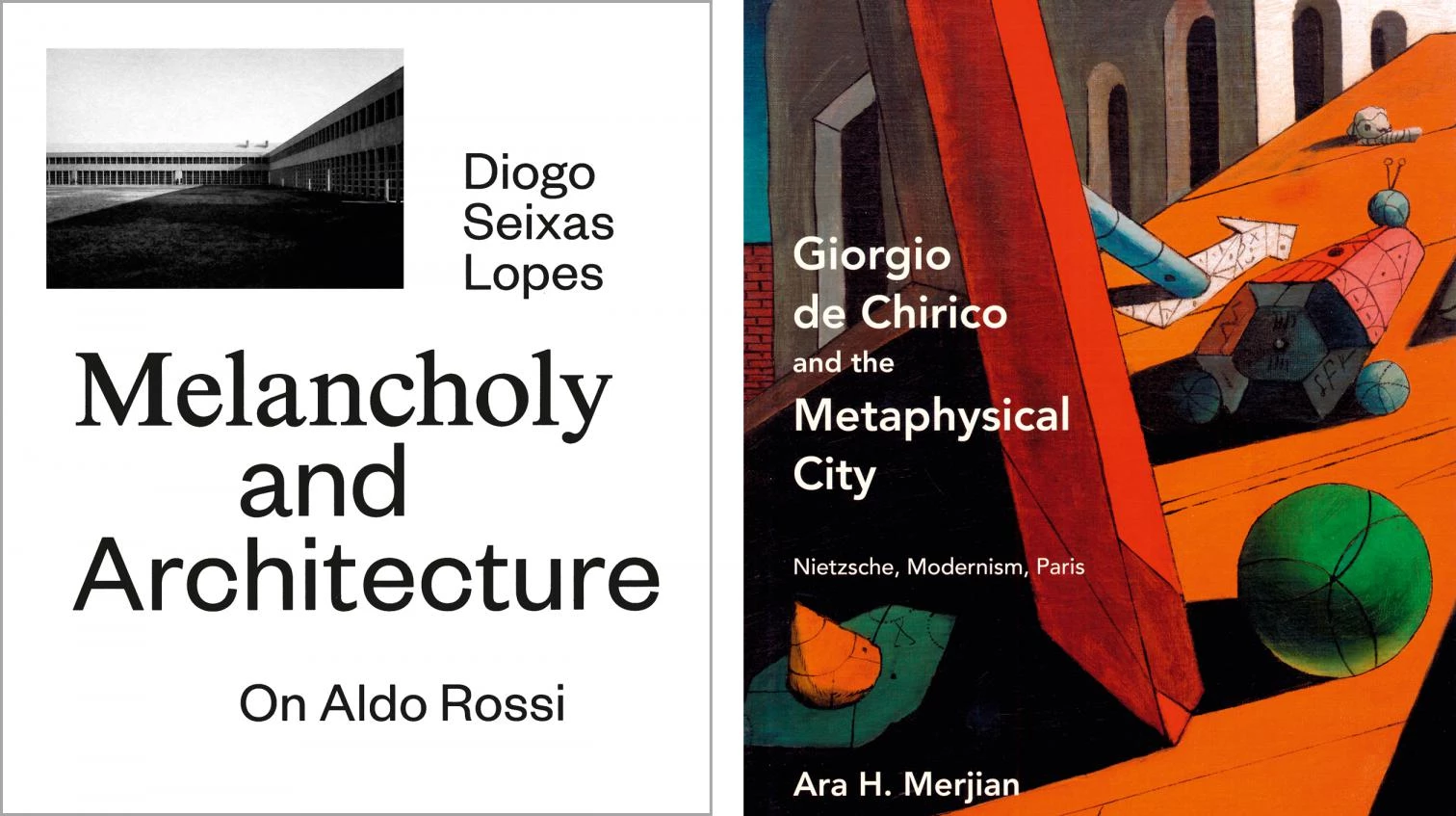
“My architecture stands mute and cold.” Aldo Rossi summed up his work paraphrasing a Hölderlin line whose desolation also recalls the architect’s devotion to Giorgio de Chirico. The solitude and silence of the painter’s urban landscapes resonates in the drawings and architectures of Rossi, who in fact acknowledged his debt to the pittura metafisica, especially of De Chirico, whose influence he mentions in the Quaderni azzurri.
Two recent books explore the legacy of these two masters of absence, and excavate with erudition and empathy into the roots of their lyrical language: the dissertation of the prematurely demised Diogo Seixas Lopes – defended at ETH under the direction of Lampugnani, Oeschlin, and Safran – goes through Rossi’s career with a melancholy eye, paying attention to the echoes of De Chirico’s metaphysical gaze and stopping at the cemetery of San Cataldo as the final expression of an architecture of shadows, loss, and oblivion; for its part, the monumental volume by Ara H. Merjian – which started as a thesis in Berkeley with T. J. Clark as director – minutely examines De Chirico’s early work, from the double axis of its representation of architectural space and its ties to Nietzsche’s philosophy, pointing out the central place of architecture in his ‘Nietzschean method,’ which explains his influence on contemporary architectural imagination, and especially in Rossi’s ‘analogue city.’
Born in 1972, Diogo Seixas Lopes passed away last 18 February, missing the opening of the fourth Lisbon Architecture Triennale, which he and Andrés Tavares curated together, but leaving behind the renovation of the mythical Thalia theater, carried out with Patrícia Barbas and Gonçalo Byrne, and an exemplary book, which with elegance, insight, and quiet emotion interprets the artistic and poetic trajectory of a master whose muscular intelligence and lyrical violence vanished into consumable signs during the last part of his career.
A denouement perhaps shared with De Chirico, whose work Raymond Queneau caustically divided into two periods, “the early and the bad,” summing up the opinion of the many who could not understand the transition from ghostly, enigmatic landscapes where arcades, chimneys, and trains were counterpointed by statues and mannequins, to the ‘Pictor Classicus’ after 1919, which replaced the metaphysical cities with a disconcerting romanità of gladiators, ephebi, and horses on the beach. But Merjian concentrates on the paintings done in Paris before the Great War, the architectural De Chirico whom Rossi had fed on in the same way that De Chirico had taken nourishment from Nietzsche, in a sequence of phantasmagoric presences that recalls the painter’s most surreal statement: “There is much more mystery in the shadow of a man walking on a sunny day than in all religions of the world.”







